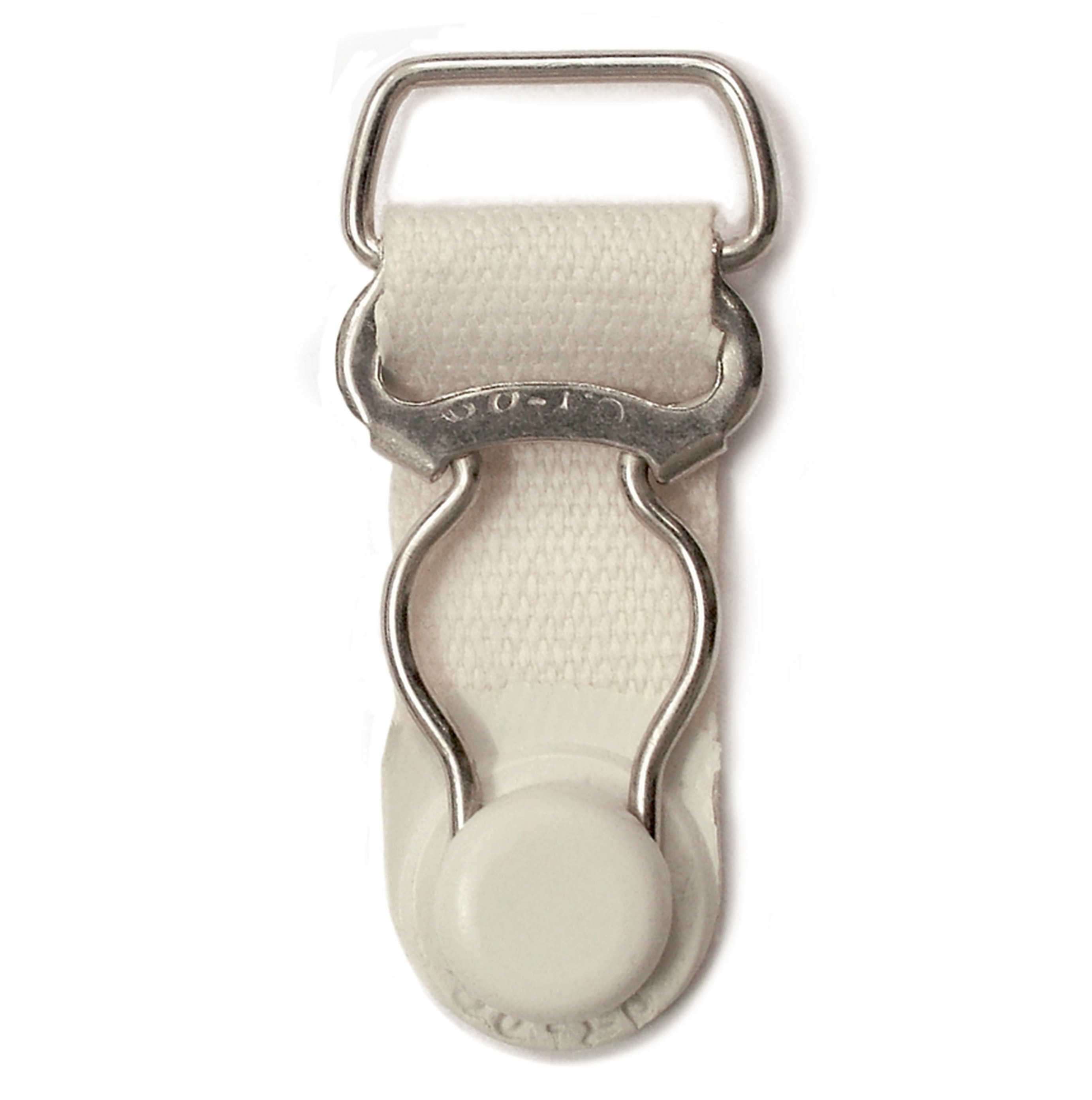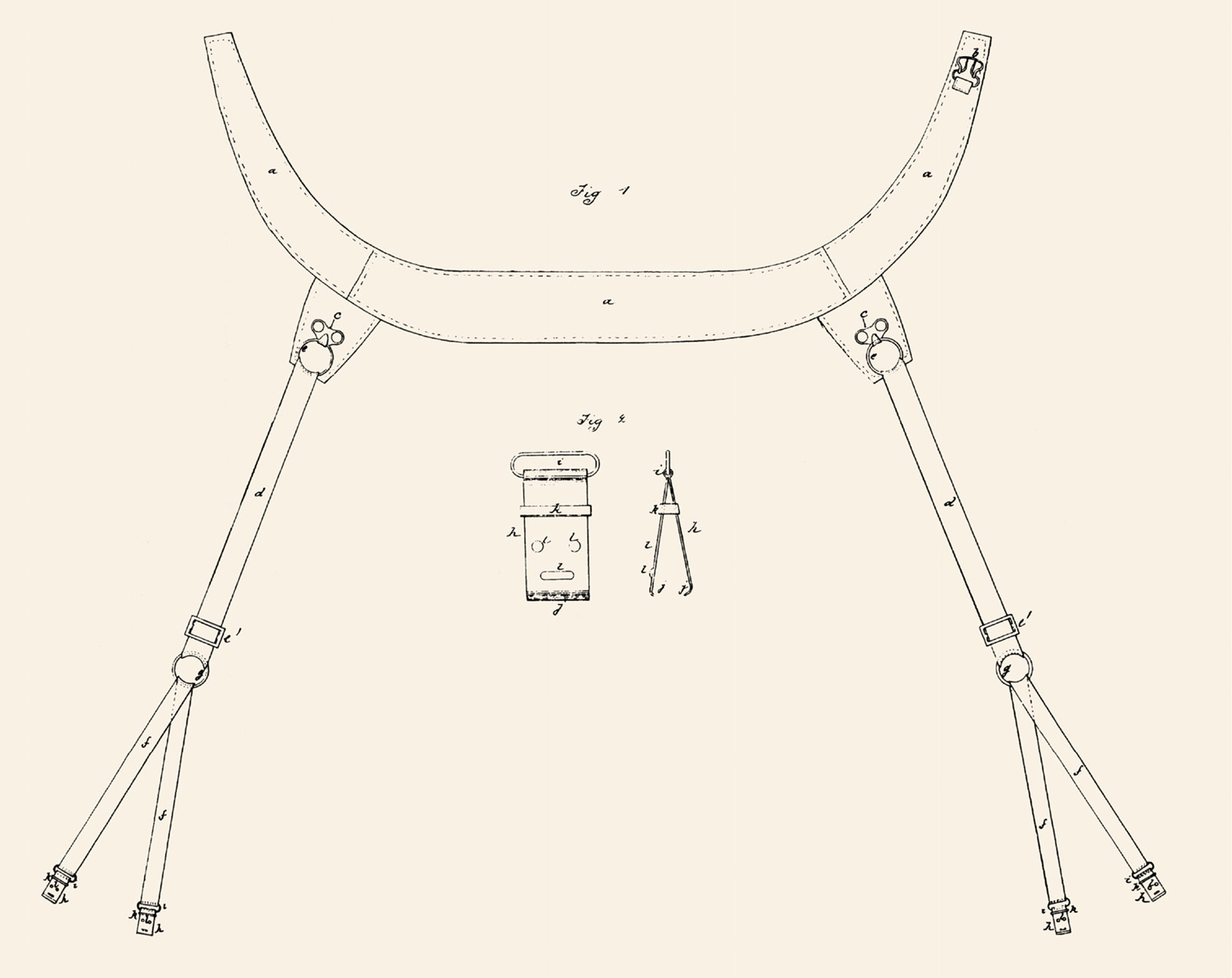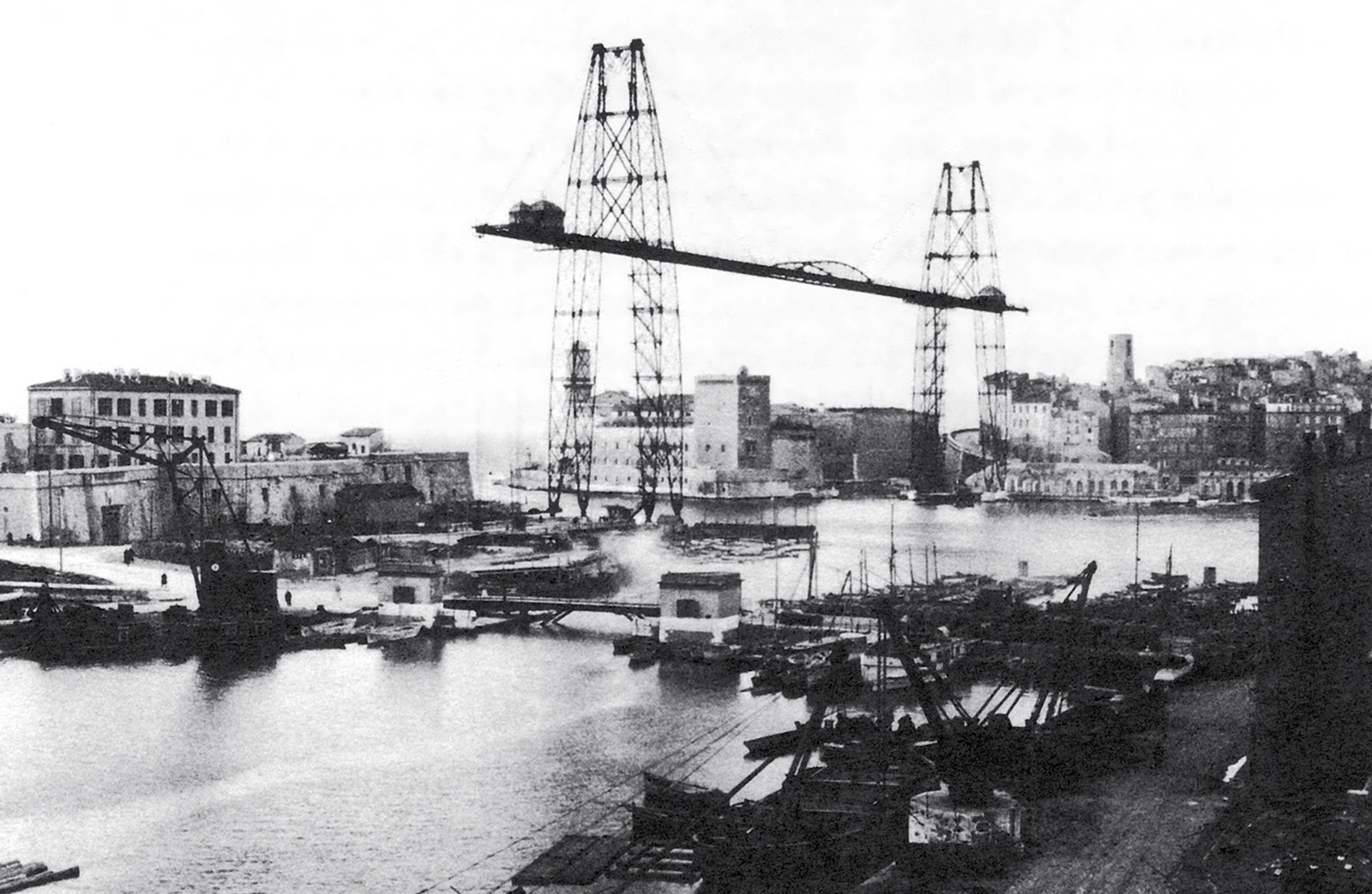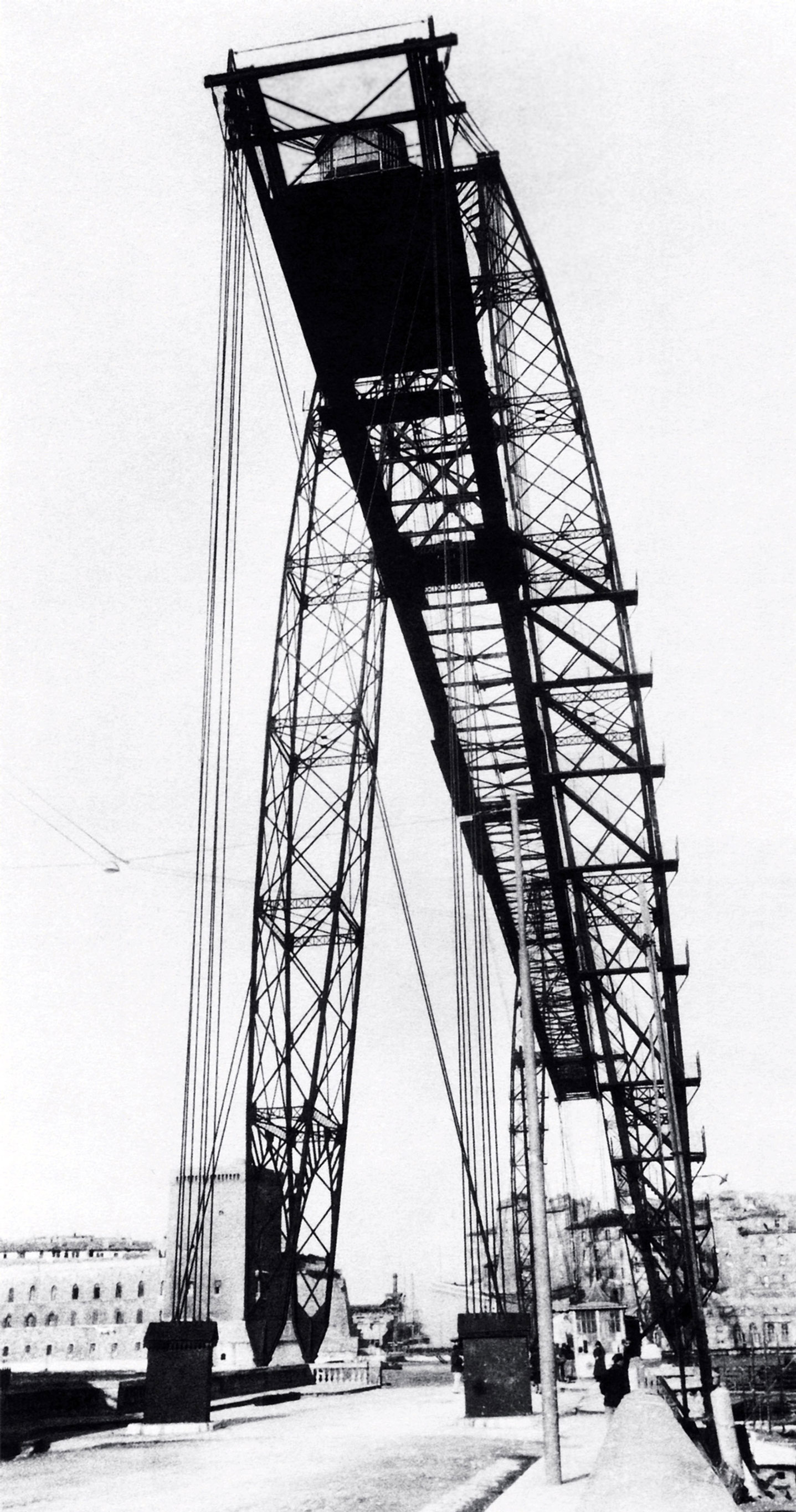A Case of Erotic Engineering
Looking for Gustave Eiffel in the lingerie department
Thomas A. P. Van Leeuwen

Porte-jarretelles, known in the US as a garter belt and in the UK as a suspender belt, is a machine of modest dimensions, designed to hold up women’s stockings that reach above the knee. Suspended from a belt that runs around the waist are four strips of elastic fabric, one on either side of each thigh, that reach out to grab both stockings by the cuff.
For a secure connection to be made, however, an intermediary connective device had to be invented, one that could hold a soft, fragile fabric that was sensitive to strong tensile forces. This challenge was one of the most vexing that late nineteenth-century engineering had to meet. The solution would be an ingenious clasp known as pince-jarretelle or, simply, jarretelle.
The problem was complex and multifaceted. Stockings made of silk were extremely delicate and would fare badly if attached to a rigid device. Additionally, there is much stretching and friction in that particular region of the human body, not to mention the considerable strain caused by the independent movement of the legs.

In order to reduce the strain, two separate elements had to be brought together: highly elastic straps and a point of attachment that was both firm and supple. Rubber, the only material up to the task, first became available in the 1850s, when latex-based products, such as bicycle tubes, waterproof boots, and condoms, began to appear on the market. Furthermore, the whole ensemble had to be detachable. In theory, the garter belt could be left on the body for an indeterminate period, but the stockings had to be taken off at least once every twenty-four hours. As a result, a point of attachment had to be constructed that provided both a secure grip and an easy-to-operate release mechanism. In the world of lingerie, one would have traditionally relied on laces, ribbons, or buttons. But this time a completely different trajectory was chosen. Time, rather than comfort, was at stake; therefore the clasp’s engineer opted for a quick-release mechanical solution.
The resulting device consisted of a bottom plate covered with elastic cloth; at the tip of this plate sat a small button, over the top of which would slide a gynomorphic steel-wire clasp. The idea was that the cuff of the stocking was pulled over the button, and that the button in turn slid into the loop of the clasp, following the principle of beginning wide and finishing narrow. The stocking was now secured, and by reversing the process it could be released without the fabric being damaged. The cloth for the clasp came in three colors: white, black, and pink. In deluxe models, a satin ribbon was folded over the mechanism, mainly for aesthetic reasons, but also to prevent overlaying clothing from getting entangled.
This solution was a piece of engineering so brilliant that later connoisseurs of fashion and historians of engineering and technology reasoned that only the greatest engineer of them all—Gustave Eiffel—could have been its inventor. Admittedly, this was a wild guess, but in the serious world of engineering, an object of such lively hermeneutics only appears once in a lifetime. Moreover, legs fully rigged in porte-jarretelles do resemble the truss of a bridge, a pylon, or a tower—perhaps even the Eiffel Tower itself. It was therefore not surprising that Eiffel was thought a likely candidate, and rumors of his involvement were in fact in circulation “in various books and magazines” by the early twentieth century.[1]
The story went that Eiffel, despite the massive amount of work he expended on his tower and on countless bridges in France, Africa and the New World, not to mention the Statue of Liberty, still had time to ponder the structural problems posed by a minute accessory of the lingerie industry. After all, the man was a bridge-builder, a “pontifex,” somebody able to produce a work of enduring stability that spans the distance between two opposites. It was also characteristic of a truly great man that he would be able to divide his time between grand and small works evenly, depending on the challenge of the problem to be solved. Therefore a story, as unimaginative as it was apocryphal, began to circulate: that Eiffel’s wife suffered from sagging stockings and that the great man, in a moment of marital understanding, sat down at the kitchen table and drew a sketch of a new device—a garter belt designed around the famous slip-clasp. In France, Eiffel stands for all things brilliant, and so the story held up for a long time. The problem, however, is that this case of une belle mécanique was not in Eiffel’s style. It simply did not correspond with his sturdy, nineteenth-century overengineering.


On the contrary, porte-jarretelles is anything but sturdy. In fact, it is as sturdy as a Citroën 2CV or a Voisin biplane. Une belle mécanique embodies “the economy of means”; where one bolt will do, only one bolt will be used. The windscreen wipers of the original Citroën 2CV only worked when the car was moving, and the oil cooler of the Voisin racing car was propelled by a fan fitted on the hood that started to turn when the car was at speed. This kind of minimalist thinking was alien to Eiffel but not to Ferdinand Arnodin (1845–1924), Eiffel’s contemporary who, like the legendary engineer, was also a builder and rebuilder, and is now best known for his work on bridges. Though his earlier inland bridges were very much like Eiffel’s, it was his invention of long-span transporter bridges over waterways that earned him his reputation. Unlike inland bridges, transporter bridges were devised to span the estuaries of busy ports such as Nantes and Marseilles. In the days before steam, the masts of sailing vessels were so tall that a fixed bridge would need to be very high, necessitating miles of approach ramps and tons of steel and concrete. Arnodin’s solution was as simple as it was improbable. Two tall, slender, trussed pylons on either side of the river were connected by a horizontal beam, from which cables were suspended carrying a small platform that resembled a small section cut from a fixed bridge. The platform, which hung very close to the surface of the water, moved from one side of the estuary to the other, allowing people and vehicles to cross without obstructing shipping.
Sigfried Giedion, eminent propagator of Modernism, selected Arnodin’s wacky ferry-bridges as the epitome of modernist design strategy. They were in all respects new, and what was more, they were the opposite of the old: “Everything is based on mobility. ... [They] strive to overcome the old sense of equilibrium that was based only on fortress-like incarceration.”[2] The bridges’ lightness and unusual operation also made them a popular subject for avant-garde photographers, like Germaine Krull, László Moholy-Nagy, and Giedion himself. The transporter bridge was not a thing that inspired a sense of security. On the contrary, it invited the curious and the adventurous. Arnodin preferred free-moving cables—he called them câbles a torsion alternative—to stationary mass. To invoke LaFontaine’s fable, Arnodin preferred the reed to the oak. Giedion was ecstatic about the bridges’ demonstrative frivolity and proclaimed it a highly attractive example of how a truly modern construction was able to connect stationary elements with mobility. A caption for a photograph that he took of one of Arnodin’s bridges reads: “Graceful combination of stationary and moving parts.”[3] It was the porte-jarretelles of bridges, and a simple comparison between it and our clasp makes the identity of its true inventor incontestable: Arnodin.
• • •
Alas, at the end of the day, all fantasies and speculation must give way to history. In this particular case, the unwelcome “accountant’s truth,” as Werner Herzog would call it, is that the creator of the original porte-jarretelles was a certain Féréol Dedieu, who patented his invention in 1876.[4] Arnodin, who should have been its inventor, will be remembered only for his bridges, the large-scale equivalent of this tiny, ingenious device.
- Lili Sztajn, Histoire du Porte-Jarretelles, (Boulogne: La Sirène,1996), p. 12.
- Sigfried Giedion, Bauen in Frankreich (Leipzig: Klinkhard & Bierma, 1928). The English translation used here is from Sokratis Georgiadis, ed., Building in France, Building in Iron, Building in Ferro-Concrete (Los Angeles: The Getty Center, 1995), p. 147.
- Ibid., p. 146.
- Lili Sztajn, Histoire du Porte-Jarretelles, op. cit, p. 15.
Thomas A. P. Van Leeuwen was professor of architectural history, cultural history, and art criticism at Leyden University for many years. He presently teaches at the Berlage Institute, Rotterdam. His books include The Skyward Trend of Thought: Metaphysics of the American Skyscraper (MIT Press, 1988) and The Springboard in the Pond: An Intimate History of the Swimming Pool (MIT Press, 1998). These studies are part of a tetralogy with each volume centered on the relationship between architecture and one of the classical elements. In preparation are Columns of Fire: The Un-doing of Architecture and The Thinking Foot: A Pedestrian View of Architecture.
Spotted an error? Email us at corrections at cabinetmagazine dot org.
If you’ve enjoyed the free articles that we offer on our site, please consider subscribing to our nonprofit magazine. You get twelve online issues and unlimited access to all our archives.